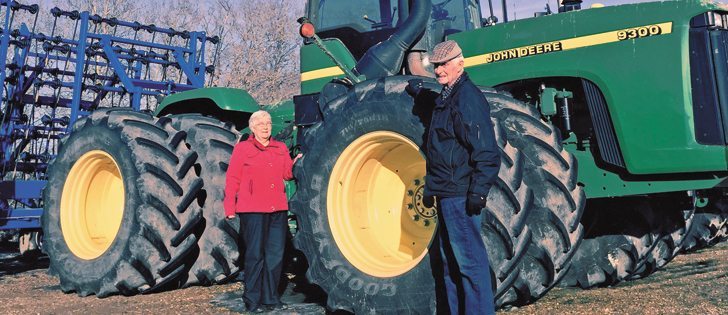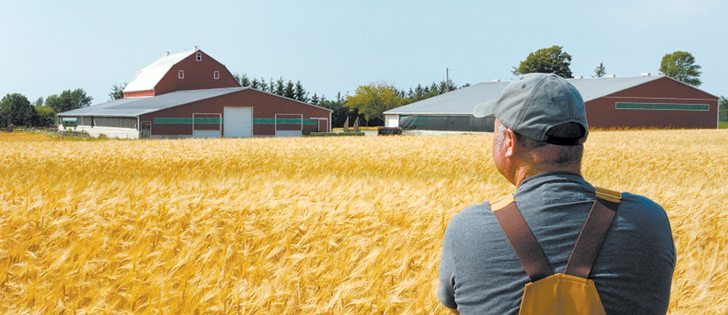The farm home and acreage is often valuable property that is given or willed to children. The children then have to decide whether to keep it, rent it or sell it.
Ted Cawkwell, agriculture specialist with the real estate company Remax, said the decision is usually left to more than one child, so renting or selling it is often seen as the fairest way to deal with it.
“In the situations I’ve encountered, they’ve weighed more heavily on renting it to someone or selling it. Also, quite often, the children are no longer living in the area, so renting it out or selling it makes more sense logistically.”
Read Also

Joint tenancy differs from tenancy in common in Sask.
While joint tenancy and tenancy in common both allow co-ownership of a single parcel of land, the impact of each optiondiffers drastically when it comes to estate planning.
If the children decide to sell the home and acreage, they will quickly learn that real estate in Saskatchewan, for example, has risen sharply in recent years. That in-cludes farmland, acreages and homes in towns and cities, said Cawkwell.
“Farmland values doubled between 2001 and 2004. Housing markets in 2006 and 2007, in a couple of year’s span, almost doubled as well.
“Farm homes or the farm acreage will still be worth quite a bit less than homes in the city,” he added. “For example you might spend $150,000 for a 1,500 sq. foot home on a farm acreage. That same size home in Saskatoon, Regina, Yorkton or Humboldt could sell for more than double that amount.”
What about the value of amenities ,such as power, natural gas and a good water source in place?
Consider electricity. Let’s say a prospective acreage buyer is looking at starting from scratch in a bare field, as opposed to buying a home already on the grid.
In Saskatchewan, a transformer serviced by SaskPower costs $6,300 to $9,400. Overhead lines cost $16,700 for 1,000 metres and underground costs $18 per metre for underground primary conductors from overhead poles to underground transformers, and the final calculated cost would have five percent GST added. (SaskPower will invest $1,300 toward the new farm service.)
Avoiding this expense, plus the cost of getting a natural gas connection and obtaining a good water source, should push up the asking price for a farm home — at least in theory.
But it’s not as much as many people think, said Cawkwell.
“Those things generally help the farm home sell quicker but they don’t necessarily help the farm home to sell at a higher price.”
Typically, the farm home will be located on the home quarter. In Saskatchewan, you are required to get approval from a number of different entities to do a subdivision of a quarter section of land, and that usually begins with the local rural municipality.
“Because we’re blessed with almost an infinite amount of land for our population, it’s very easy to get these divisions passed through the RM and the other government boards,” said Cawkwell. “I have never seen one declined yet and I’ve been involved in probably a couple dozen subdivisions.”
The process takes four to eight months and costs $4,000 to $6,000. A realtor can guide the buyer and seller through the paperwork.
The rural lifestyle has a certain amount of caché for prospective renters, particularly those with children. An acreage is a great place to raise kids. Generally, a landlord could expect to rent out a farm home for about the same amount as one in town, but location is a factor. The closer to town without actually being in town, the better.
If a decision has been made to rent, certain steps can be taken to prepare a property so it can be more easily maintained from a remote location. A plumber and electrician can be hired to conduct a once-over to check for potential problems, such as failing pressure pumps, collapsing septic tanks and electrical issues.
If the new acreage owners live too far away to reasonably carry out landlord duties, they might consider hiring a property manager or an equivalent.
Mike Schmidt, property manager with ICR Property in Saskatoon, said ICR doesn’t have rural acreages on its books but it could handle properties up to about 20 minutes out of the city.
“What we specialize in is the rental of the property,” he said. “We don’t do yard maintenance and things like that, but there are property management companies that do.”
ICR offers services that include advertising and showing the property, taking applications from prospective tenants, checking references, periodic inspections while the property is being rented and maintaining a 24-hour contact and emergency service.
Rates for these services are based on a percentage of the rent.
In some ways, living in the traditional farm home may seem like the best solution. What could be better for your child than coming back to the home he or she grew up in? What could be better for you, as parents, than to see this?
But it’s not without pitfalls. If there are two or more children, problems can arise with the decision of who gets to live in it? And if the children don’t live in the area, are they able to relocate?
As well, emotional issues must be looked after. As the person leaving the farm home behind, are you able let go? Your child and his or her spouse could move in and decide to renovate your former home. Would you be OK with that?
Finally, before giving your home to your children, check with your accountant regarding tax laws that govern the gifting of property and how they might effect you and your children.














